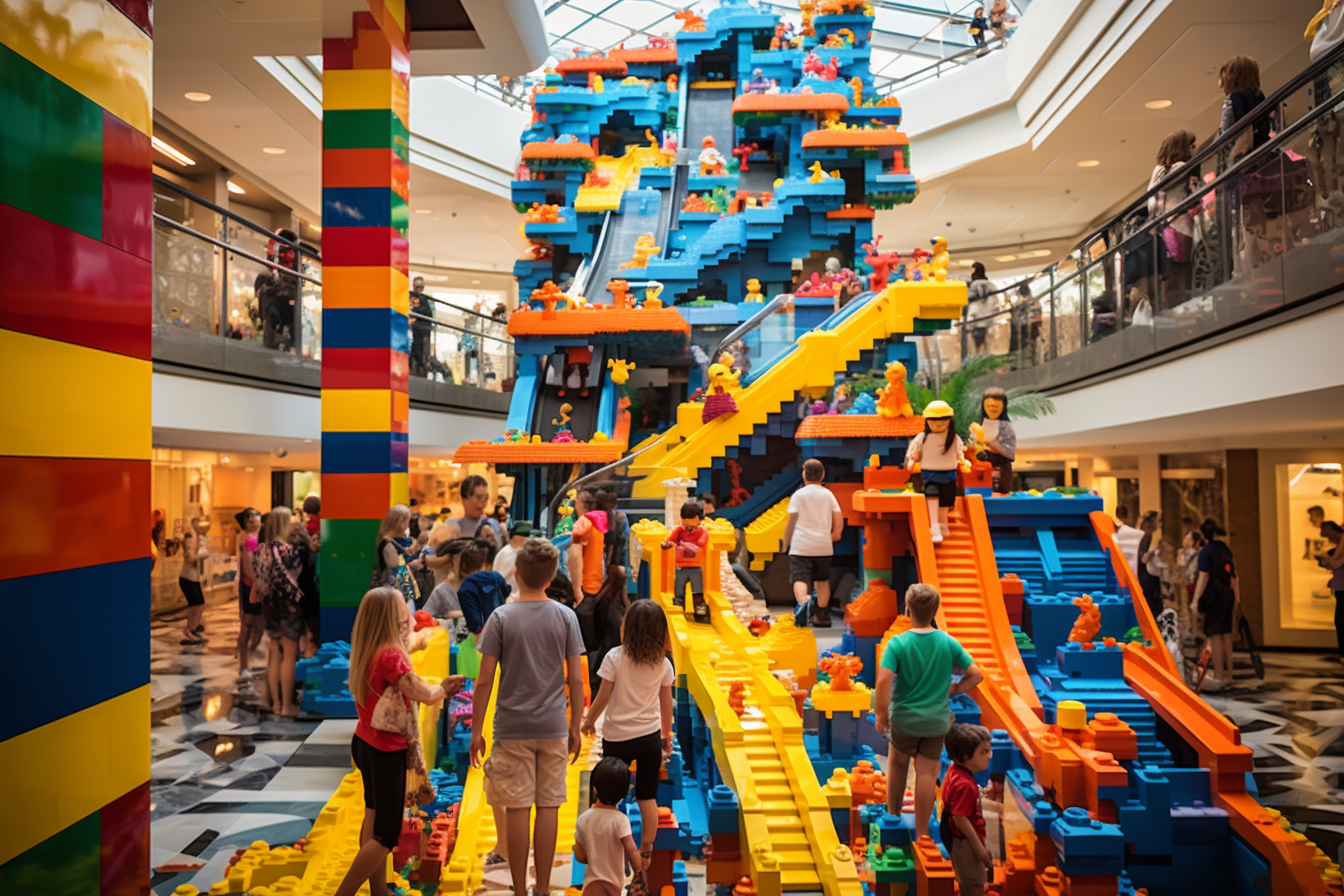A San Francisco architect has a kinda crazy idea for filling the former Westfield mall in Downtown that he thinks might just work. Forget Mayor London Breed’s idea for a soccer stadium, he says. Let’s go for Legoland.
Mark Hogan, the founder of the architecture firm OpenScope Studio, has been a thought leader in the revitalization of the city’s Downtown. Some of his concepts provided the foundation for the city’s legislation to help ease the process of office-to-residential conversion.
Now he’s turned some of his mental energy to helping fill retail vacancies.
Westfield pulled its name off the mall in June, and last month, Nordstrom officially closed its doors, leaving a huge hole across five floors of the mall at 865 Market St., one that Hogan sees as an opportunity.
“Ikea has opened up just down the street to big crowds and a lot of enthusiasm—Legoland is the obvious next step,” he wrote in a blog post.
Besides the soccer stadium, Breed has raised some pie-in-the-sky concepts for helping to usher in the next era of the property, including converting its retail space into labs.
Those ideas have gotten mixed reviews from the proprietors of surrounding businesses who have questioned the costs and feasibility. There’s also the simple fact the city does not currently have a professional soccer team—and the mall still has dozens of operating stores.
“If we’re going to create an attraction like a soccer field, why not start with something that doesn’t require a $1 billion investment?” Hogan said. Plus, he noted, the mall already has a busy Lego Store.
With the mall’s central location in the city as well as its proximity to transit—the Powell Street BART Station, a Muni stop and a cable car turnaround are literally right there—Hogan argues a mini-theme park could act as a regional draw that could bring a regular flow of families Downtown. Unlike a soccer stadium, which is unlikely to be used every day, a Legoland could be open daily.
“If we actually want to draw people to this neighborhood, there are a million lower-hanging pieces of fruit that we could be going after that would be a lot more practical,” Hogan said.
Although the most well-known Legoland location is in Carlsbad, north of San Diego, a more fitting analog to Hogan’s idea can be seen an hour south of San Francisco at the Legoland Discovery Center Bay Area in Milpitas’ Great Mall.
The compact indoor amusement park has rides, Lego play zones and amazing re-creations of Bay Area landmarks (complete with an underground BART system that runs between the cities). Imagine a similar draw with those iconic San Francisco buildings within walking distance. Admission to the Legoland Discovery Center runs about $30 per person, or $120 for an annual pass.
There are currently 29 Legoland Discovery Centers worldwide and 14 in the United States. The indoor theme parks generally average around 30,000 to 35,000 square feet, which would mean around 10 Legolands fit into the 312,000 square feet vacated by Nordstrom.
Julie Estrada, a spokesperson for Merlin Entertainment, which owns and operates Legoland theme parks, did not comment specifically on the viability of the San Francisco proposal.
“Merlin Entertainments is always looking for new opportunities to bring attractions and Merlin Magic Spaces to areas around the world,” Estrada said.
Hogan notes that a Legoland is only one of the potential uses for the vacant space. Other ideas he threw out included a maker space, a co-working location, a seasonal events location or a place to incubate small businesses.
Hogan, who originally hails from Buffalo, said he’s heard his fair share of silver bullet ideas to revitalize ailing Rust Belt cities. What has worked more often than not, however, has been more of a grassroots transformation.
“The story in most of the Rust Belt is that the things that were most successful were the things that were very bottom-up and incrementally developed over time versus, ‘Let’s tear down a bunch of buildings to cram in a giant thing that’s going to save the city,’” Hogan said.
